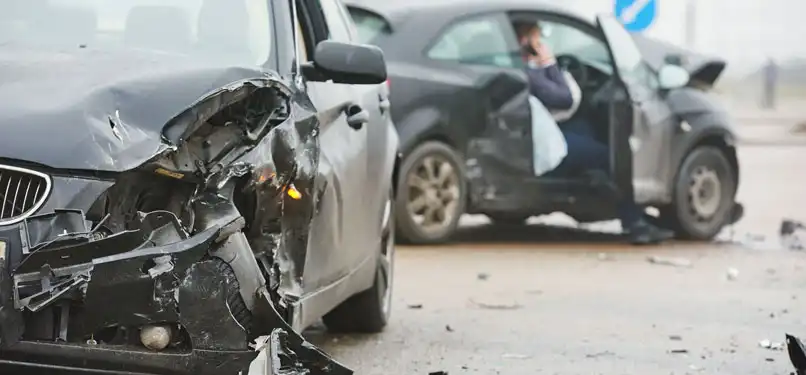While car accidents are undoubtedly frightening experiences, there are some intriguing facts about them that offer insight into why they happen so frequently. Here are some statistics and information that shed light on vehicle accidents and their occurrences.
Women vs. Men: Who Are the Safer Drivers?
According to statistics, women tend to be better and safer drivers than men. This is not just a debate between genders but is backed by data showing that men are more likely to be involved in accidents as the at-fault party. Here are some key points:
- Accident Involvement: Men are more frequently involved in car accidents compared to women. This higher involvement rate translates to more men being injured or killed on the roads.
- Seatbelt Usage: Women are more diligent about wearing seatbelts. This habit significantly reduces their risk of injury in an accident.
- Awareness of Risks: Women often exhibit greater awareness of the risks associated with car accidents, particularly when they have children as passengers, leading to more cautious driving behaviors.
These facts highlight the importance of safe driving practices and awareness of road safety, regardless of gender.
Common Causes of Car Crashes
Car accidents can often be avoided if drivers prioritize safety and remain aware of other road users. However, many crashes occur due to negligence or risky behaviors. Here are some of the most common reasons for car crashes:
1. Driving Under the Influence
One of the leading causes of car accidents is driving under the influence of alcohol or drugs. Impaired drivers have reduced reaction times and poor judgment, making them a significant danger on the road.
2. Speeding
Driving too fast is another major cause of accidents. Speeding reduces the driver’s ability to react to sudden changes in traffic conditions and increases the severity of crashes when they occur.
3. Fatigue
Driving while fatigued can be as dangerous as driving under the influence. Tired drivers have slower reaction times and are more likely to make errors due to their inability to concentrate.
4. Unsafe Overtaking
Attempting to overtake other vehicles in unsafe conditions is a common cause of accidents. This behavior can lead to head-on collisions and other serious incidents.
5. Distracted Driving
Using a cellphone while driving, especially texting, is a significant contributor to road accidents. Distracted drivers are less likely to notice and react to hazards in time.
Promoting Safer Driving
Understanding these common causes of car accidents can help drivers adopt safer habits. Here are a few tips to stay safe on the road:
- Never drive under the influence: Always designate a sober driver or use alternative transportation if you’ve consumed alcohol or drugs.
- Follow speed limits: Adhering to speed limits gives you more time to react to potential hazards.
- Stay rested: Ensure you are well-rested before driving, especially on long trips.
- Be cautious when overtaking: Only overtake when it’s safe to do so, and always signal your intentions.
- Avoid distractions: Keep your focus on the road and avoid using your phone while driving.
By staying mindful of these common causes and following safety tips, drivers can help reduce the risk of accidents and make the roads safer for everyone.
Adults vs. Teen Drivers: Who Drives Safer?
When comparing driving safety between adults and teenagers, statistics clearly show that adult drivers are generally safer. Teens are more likely to be involved in car accidents due to their lack of experience and tendency to engage in risky behaviors such as speeding.
Teen Driver Statistics
- Higher Accident Rates: Teen drivers are twice as likely to be injured or killed in car accidents compared to adults.
- Cause of Accidents: Most accidents involving teens are often caused by the teen driver themselves, frequently due to inexperience or reckless driving.
Efforts to Improve Teen Driving Safety
Efforts have been implemented to raise awareness among teens about the dangers of unsafe driving practices, including texting and driving. These educational campaigns and stricter laws have contributed to lower accident rates among teen drivers.
Personal Insights and Historical Context
Reflecting on past decades, such as the 1980s, provides additional context to the discussion on teen driving safety:
Historical Perspective: In the past, the absence of distractions like cell phones meant that accidents were often due to other factors, such as speeding. Personal anecdotes often highlight that boys were more frequently involved in severe accidents, while girls’ accidents were typically minor.
Future Research
Conducting a comparative study on teenage driving accidents from the 1980s versus today could provide valuable insights into how driving behaviors and accident rates have evolved over time.
Promoting Safe Driving Practices
Education and Awareness: Continual efforts to educate teens about the dangers of reckless driving, including the use of mobile phones while driving, are crucial.
Parental Guidance: Parents play a key role in setting an example and enforcing safe driving habits.
Policy and Enforcement: Stricter laws and enforcement can help deter dangerous behaviors among teen drivers.
By understanding these dynamics and promoting safer driving practices, we can work towards reducing the incidence of accidents among teen drivers and creating safer roads for everyone.
Dangers of Non-Roadworthy Vehicles
Vehicles that aren’t maintained properly pose significant risks. Common issues include:
- Brake Failure: Neglected brakes can fail, leading to serious accidents. True brake failures are rare, but lack of maintenance can cause critical components to malfunction.
- Tire Blowouts: Worn-out tires can burst without warning, especially in adverse conditions like rain, increasing the likelihood of losing control of your vehicle.
- Faulty Headlamps and Indicators: Driving with busted headlamps or non-functional indicators makes it difficult for you to see and be seen, increasing the risk of accidents.
Common Signs of Non-Roadworthy Vehicles
You’ve likely seen vehicles on the road that shouldn’t be there—cars with dragging bumpers, shattered headlights, or bald tires. These are clear indicators that the vehicle is not being properly maintained.
Essential Maintenance Tips
Even if you can’t afford comprehensive vehicle maintenance, prioritizing a few key areas can significantly enhance safety:
- Tires: Ensure your tires are in good condition. Bald tires can cause you to lose control, especially in wet conditions.
- Brakes: Regularly check and maintain your brakes. Ensure all components, including pads, rotors, and brake fluid, are in working order.
- Lights and Indicators: Make sure your headlamps, turn signals, and brake lights are functioning correctly. This helps other drivers see you and understand your intentions on the road.
- Engine Maintenance: Regularly check your engine’s cooling system and oil levels to prevent breakdowns and maintain performance.
Why It Matters
Maintaining these key components not only keeps you safe but also ensures that your vehicle is less likely to cause an accident. Investing in these critical areas of vehicle maintenance can prevent costly repairs and protect you and others from potential harm.
Tips to Ensure You Are Always Safe on the Road
Staying safe on the road requires awareness, preparation, and responsible behavior. Here are some essential tips to help you drive safely and protect yourself and others:
1. Avoid Texting While Driving
Texting while driving is a leading cause of accidents. No text message is worth risking your life. Do not reply or text while driving: It only takes a second of distraction to cause an accident. If you need to respond to a message, pull over safely first.
2. Keep Your Vehicle in Good Condition
Regular vehicle maintenance is crucial for safety:
- Check your tires: Ensure your tires are in good condition. Worn-out tires can lead to blowouts, especially in adverse weather.
- Regular maintenance: Keep up with regular maintenance checks for brakes, lights, and engine performance.
3. Be Vigilant at Intersections
Always be cautious at red lights and stop signs:
- Watch other drivers: Don’t assume other drivers will stop. Look both ways and ensure it’s safe to proceed.
4. Wear Your Seatbelt
Seatbelts save lives and reduce injury severity:
- Always buckle up: Make it a habit to wear your seatbelt every time you get in the car.
- Proper child safety: Ensure young children are in high-quality car seats that are correctly installed.
5. Avoid Speeding
Speeding reduces your reaction time and increases accident severity:
- Stick to speed limits: It’s better to arrive a few minutes late than not at all. Drive at safe speeds, especially in adverse conditions.
Final Thoughts
By following these tips, you can significantly enhance your safety on the road. Safe driving habits not only protect you but also contribute to the overall safety of everyone on the road. Stay aware, stay prepared, and drive responsibly.





 Since 2012, Accident Doctor has been dedicated to connecting personal injury patients and attorneys with qualified physicians who specialize in treating accident-related injuries. Our nationwide network includes experienced medical professionals who provide care for individuals involved in car accidents, motorcycle accidents, truck and tractor-trailer collisions, slip and fall incidents, and workers’ compensation cases.
Since 2012, Accident Doctor has been dedicated to connecting personal injury patients and attorneys with qualified physicians who specialize in treating accident-related injuries. Our nationwide network includes experienced medical professionals who provide care for individuals involved in car accidents, motorcycle accidents, truck and tractor-trailer collisions, slip and fall incidents, and workers’ compensation cases.